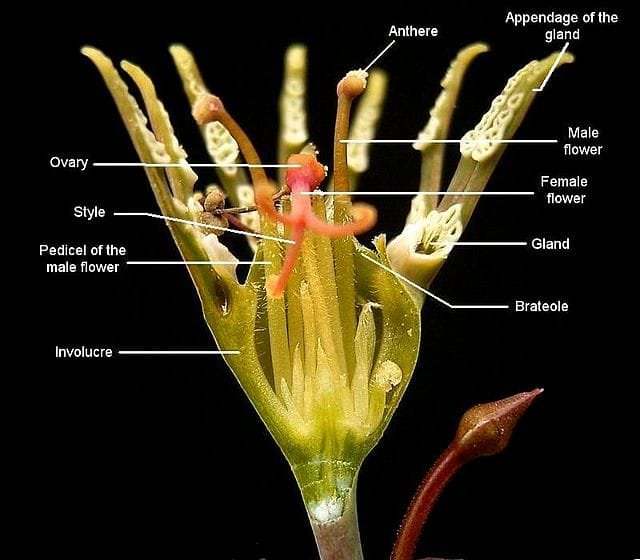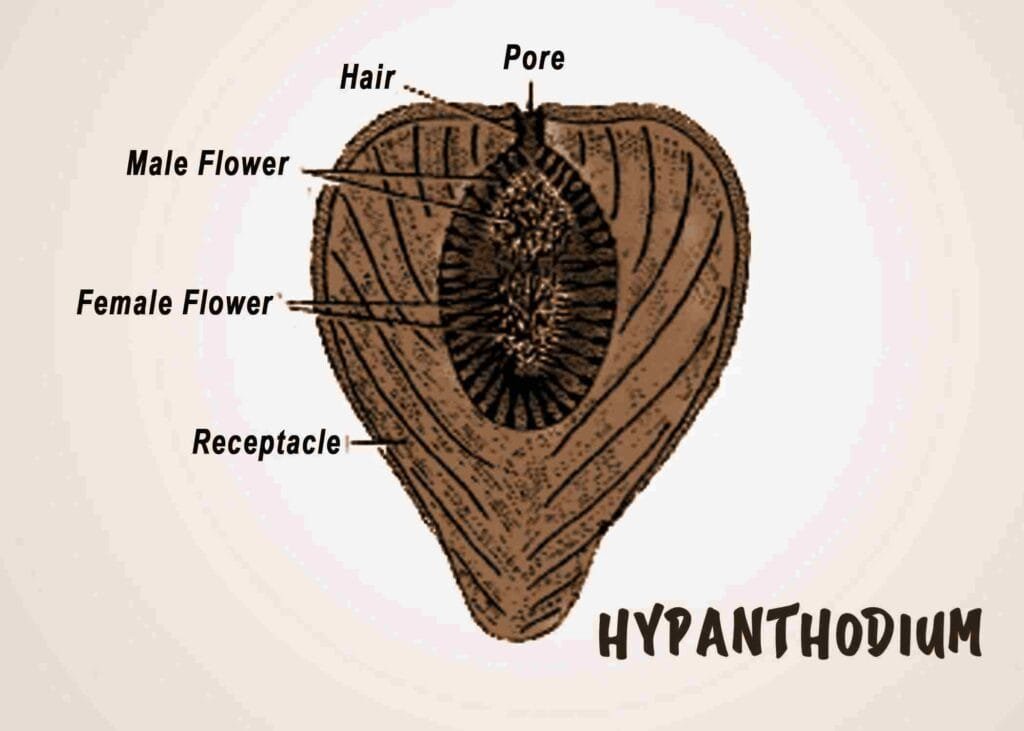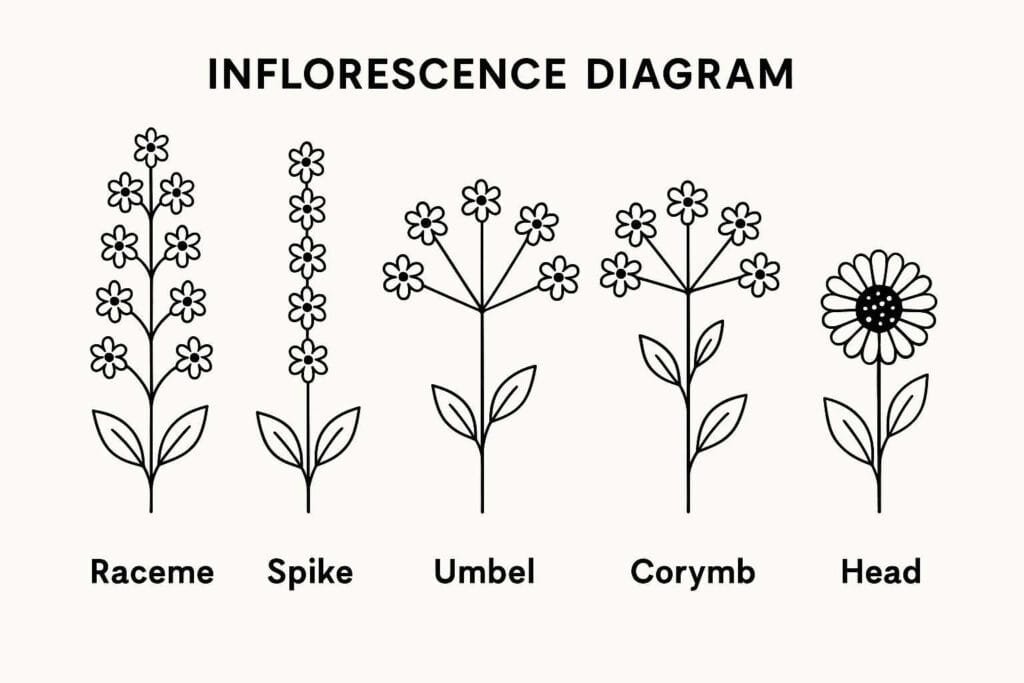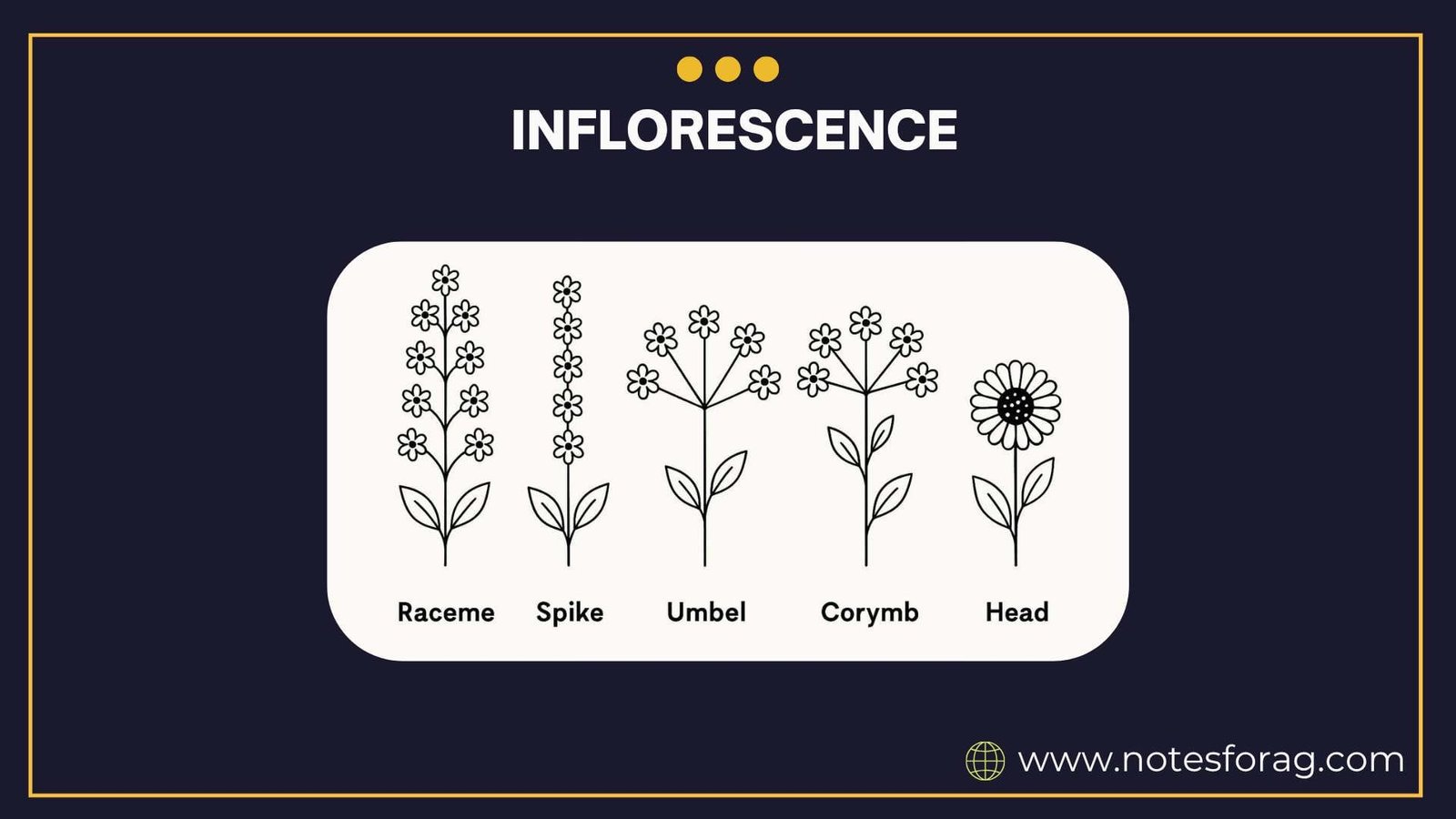INTRODUCTION
Inflorescence is a structural component in flowering plants that refers to how flowers are arranged on the plant. This arrangement not only improves pollination but also plays a role in plant identification and classification. Different floral arrangements have evolved to match various pollination strategies and environments. Studying this aspect helps understand reproductive systems, plant evolution, and diversity.
DEFINITION OF INFLORESCENCE
It refers to the pattern in which multiple flowers are organized on the main floral stalk, also called the peduncle. Unlike solitary blooms, these groupings follow specific sequences and designs to improve reproductive efficiency. The axis bearing these flowers may be simple or branched and is crucial in forming floral structures.
Table of Contents
TYPES OF INFLORESCENCE
Floral arrangements in angiosperms can be grouped into three categories based on how the main axis grows and the flower arrangement: racemose, cymose, and special types.
1. Racemose Inflorescence
Here, the central axis grows continuously, not ending in a flower. Flowers appear on the sides in a sequence with older ones at the bottom and younger ones at the top.
1.1 Raceme
Flowers with stalks grow along a central stem. Example: mustard.
1.2 Spike
Sessile flowers (without stalks) grow directly from the axis. Example: Achyranthes.
1.3 Spikelet
Seen in grasses, these have a small axis with tiny flowers and bracts. Example: wheat, rice.
1.4 Catkin
A drooping, narrow cluster with unisexual flowers. Example: mulberry.
1.5 Corymb
Flower stalks vary in length, forming a flat-topped cluster. Example: candytuft.
1.6 Umbel
All flower stalks emerge from a single point. Example: coriander.
1.7 Spadix
A thick, fleshy axis bears flowers and is enclosed by a spathe. Example: banana.
1.8 Capitulum (Head)
Numerous sessile flowers are grouped on a flat base, surrounded by bracts. Example: sunflower.
2. Cymose Inflorescence
The main stem ends in a flower, limiting further growth. New flowers form below, giving rise to younger flowers at the base.
2.1 Uniparous Cyme
One side branch grows at a time.
- Helicoid: Branches curve in one direction. Example: Heliotropium.
- Scorpioid: Branches alternate sides. Example: forget-me-not.
2.2 Biparous Cyme
Two branches form under the first flower. Example: jasmine.
2.3 Multiparous Cyme
Multiple branches arise below the terminal bloom. Example: Calotropis.
3. Special Inflorescence Types
These do not match racemose or cymose patterns.
3.1 Cyathium

A cup-like structure holds one female and several male flowers. Example: Euphorbia.
3.2 Verticillaster
Sessile blooms form a ring at each node. Common in the mint family. Example: Ocimum.
3.3 Hypanthodium

Flowers are hidden inside a flask-shaped cavity. Example: fig.
FUNCTIONS
Grouped flowers help attract pollinators efficiently. Proper floral arrangement aids in seed and fruit development. These patterns also serve as key traits for botanists studying classification and evolution.
DIFFERENCE BETWEEN RACEMOSE AND CYMOSE
| Feature | Racemose | Cymose |
|---|---|---|
| Axis Growth | Continuous | Ends in flower |
| Flower Order | Bottom to top | Top to bottom |
| Flower Position | Older at base | Older at top |
| Blooming | Progressive | Limited by terminal bloom |
IMPORTANCE IN PLANT TAXONOMY AND AGRICULTURE
Floral arrangements help scientists classify and identify plant families. In farming, knowing these structures assists in improving breeding, pollination, and yields. For instance, understanding floral structures in wheat and rice helps boost grain output and simplify harvesting.
AGRICULTURAL APPLICATIONS
- Yield in cereals is tied to spikelet development.
- Pollination patterns rely on flower grouping.
- Cluster-bearing plants like banana benefit from structural knowledge.
- Farming methods can be tailored based on flower arrangement.
ROLE IN HORTICULTURE AND BREEDING
Flower grouping influences ornamental plant selection. Shape, symmetry, and display depend on the arrangement, helping in the development of attractive or commercially viable varieties.
DIAGRAM USE IN STUDY

Visual aids like diagrams help learners understand the spatial arrangement of flower groups. These are especially useful in botany education.
CONCLUSION
Understanding how flowers are grouped in plants reveals their reproductive efficiency, ecological behavior, and classification features. From helping in breeding to supporting yield in agriculture, floral structures are foundational in plant science. By continuing to study these groupings, we can improve farming, protect species, and adapt to changing climates.
Frequently Asked Questions (FAQs)
What is the meaning of inflorescence?
Inflorescence means the way flowers are arranged on a plant’s stem. It helps in pollination and makes plants easier to identify.
What is cymose inflorescence?
Cymose inflorescence is when the main stalk ends in a flower, so growth stops there. The oldest flower is at the top and younger ones grow below it.
What is the meaning of inflorescence?
Inflorescence means the way flowers are arranged on a plant’s stem. It helps in pollination and makes plants easier to identify.
Related Articles

